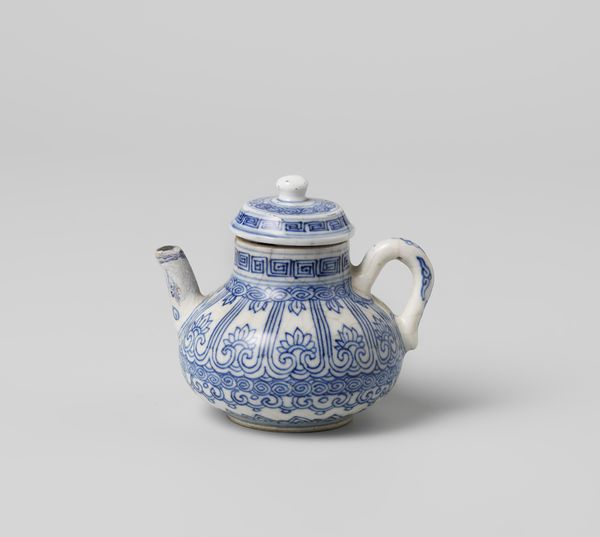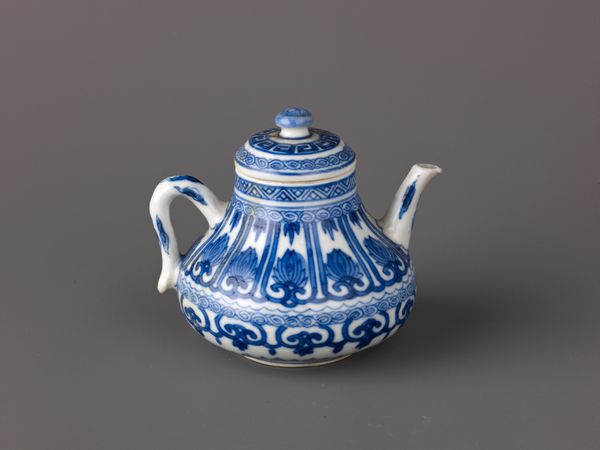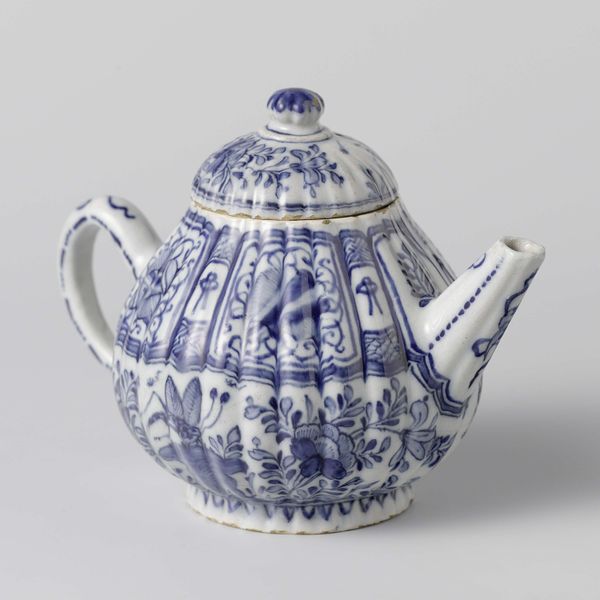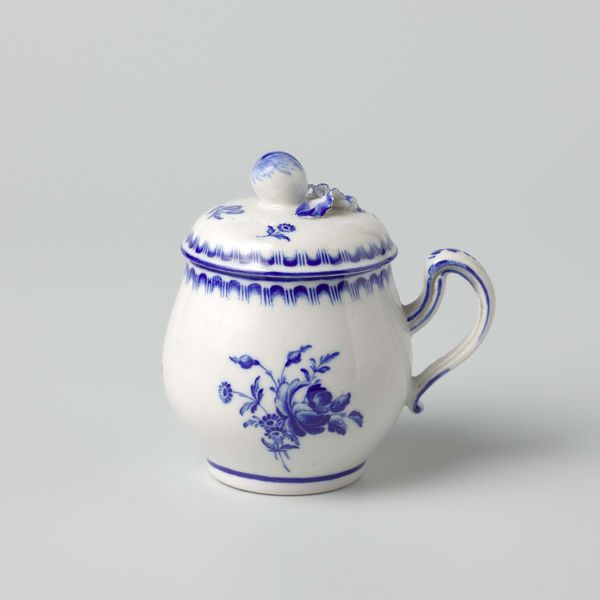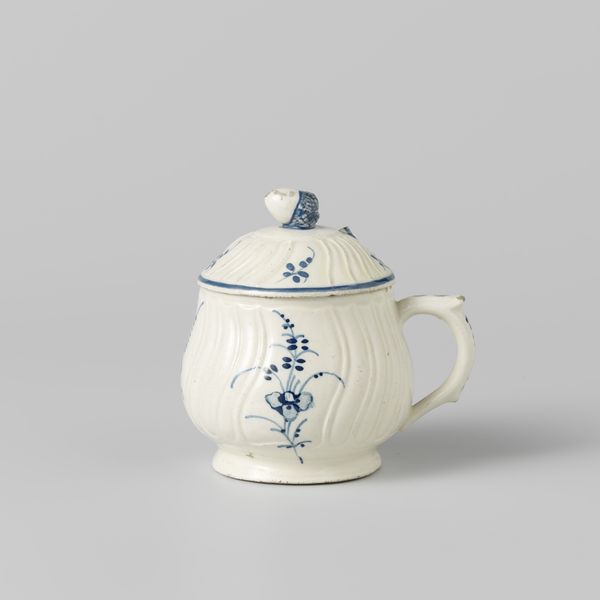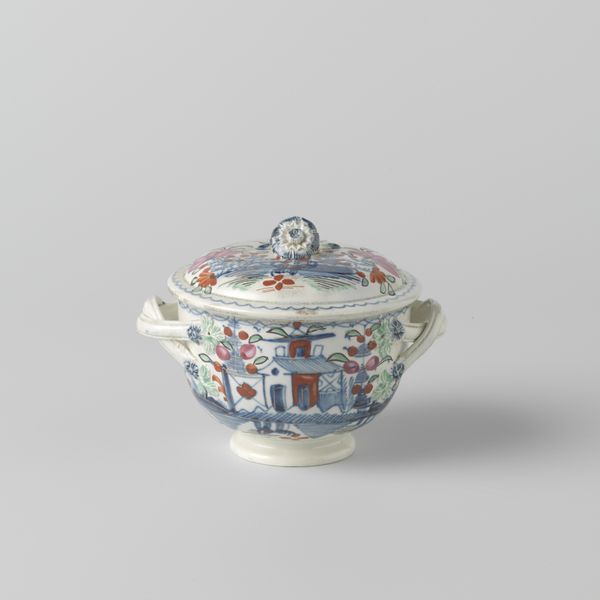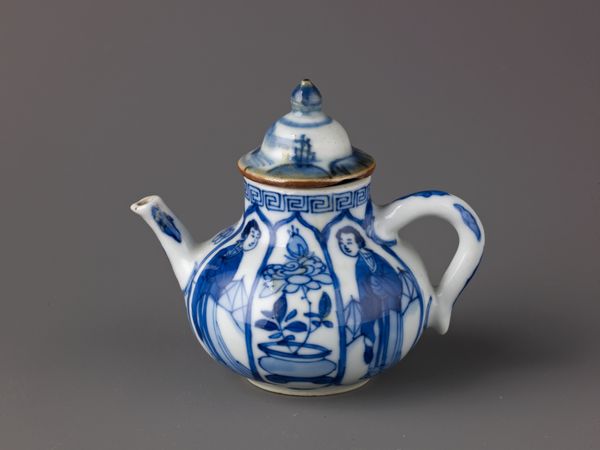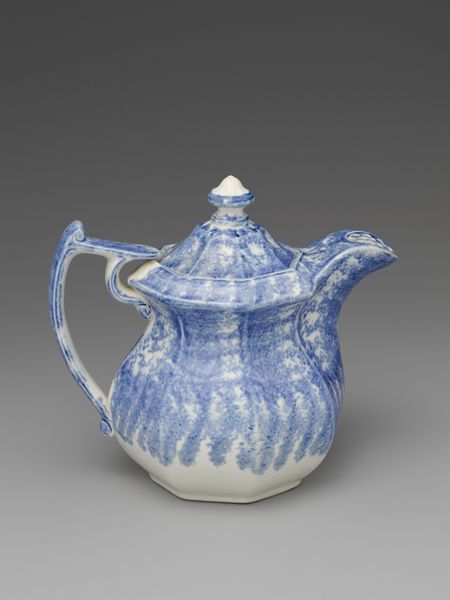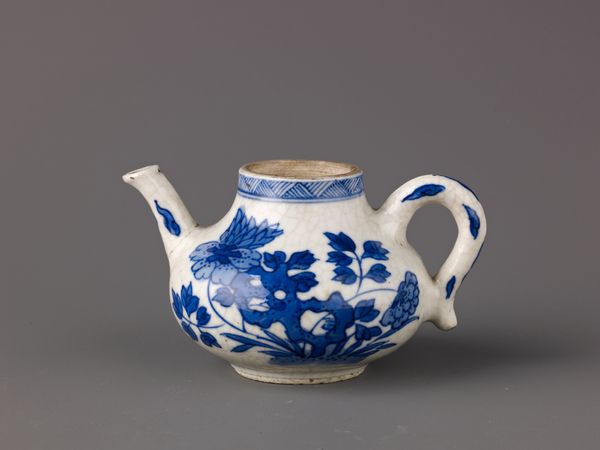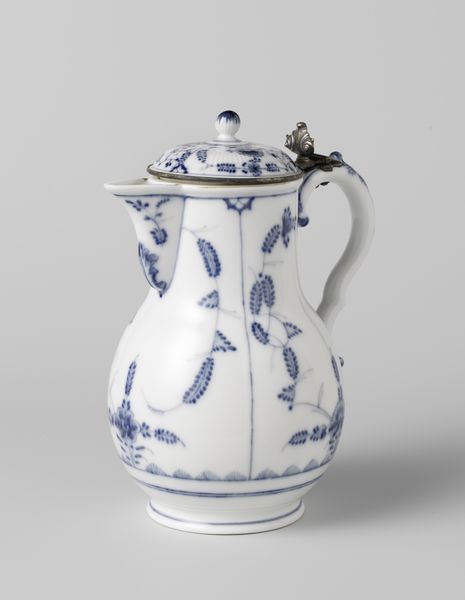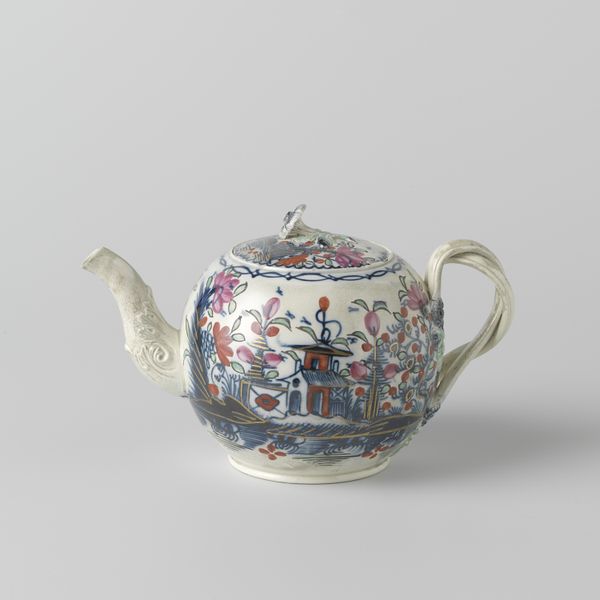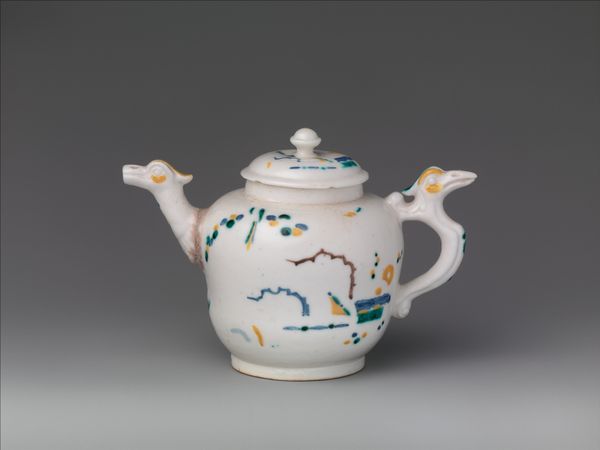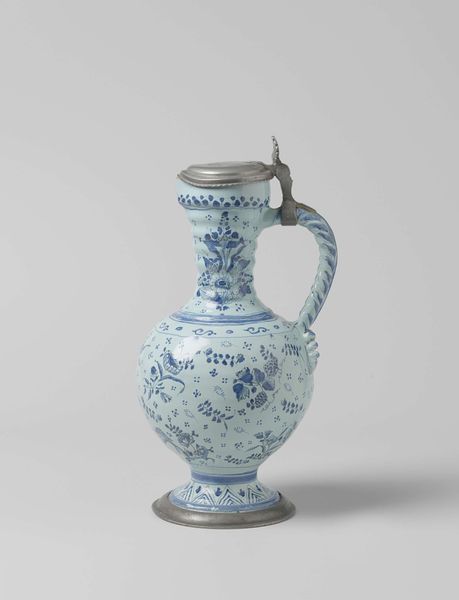
Teapot with stylized lotus scrolls, ruyi-motif and ornamental borders c. 1700 - 1724
0:00
0:00
anonymous
Rijksmuseum
ceramic, earthenware
#
asian-art
#
ceramic
#
earthenware
Dimensions: height 6.3 cm, diameter 3.3 cm, diameter 6.5 cm, diameter 3.3 cm, length 7.7 cm
Copyright: Rijks Museum: Open Domain
Editor: We're looking at a Chinese, earthenware teapot, likely from around 1700 to 1724. I'm drawn to how intricate the blue floral patterns are against the white. What stands out to you? Curator: Formally, it is the tension created by the stark contrast of the blue pigment on the white ground. Note how the repetitive lotus scrolls and geometric borders interact with the teapot's bulbous form, emphasizing its three-dimensionality. Do you observe the construction of the handle and spout, how they almost seem like afterthoughts? Editor: They do feel separate from the main body, like applied elements. Is that unusual for ceramics of this period? Curator: Perhaps not unusual, but structurally intriguing. The glaze application and the way the handle is attached seem to negate the inherent elegance of the shape, instead creating an object that emphasizes functionality and artisanal skill. Editor: So, instead of focusing on its potential cultural significance, we’re really examining the visual components and how they relate to each other, almost like a study in contrasts. Curator: Precisely. Observe also the somewhat uneven application of the glaze and paint. This, instead of detracting from the piece, accentuates the handmade aspect of its creation. What do you make of it? Editor: It feels much more immediate. I came expecting grand narratives and am instead seeing deliberate choices about form and execution. Curator: The aesthetic lies within those artistic decisions, those relations of color, shape, and texture that generate our experience of the artwork.
Comments
No comments
Be the first to comment and join the conversation on the ultimate creative platform.
